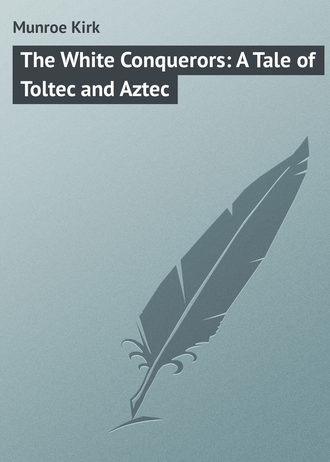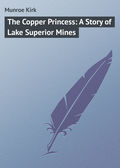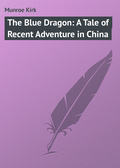
Munroe Kirk
The White Conquerors: A Tale of Toltec and Aztec
CHAPTER XXXVII.
ONCE MORE IN THE MEXICAN VALLEY
During the four months occupied by Cortes in reconquering the eastern half of the Aztec kingdom, so that when he was ready to proceed against its capital city he might leave no enemy behind him, events of importance were taking place elsewhere. One of these was the death of Cuitlahua, Montezuma's brother and successor. He fell before a dread scourge now sweeping over the land, and reaping such a harvest of dead as even that warlike country had never known. It was the small-pox, introduced to the Western World by a negro, the first of his race to set foot on the American continent, who had been one of the followers of Narvaez. Breaking out at Cempoalla, it swept over the land with the virulence of a plague, seizing alike upon hut and palace. In Tlascala, the blind chieftain of Titcala was among its victims. Huetzin, hastily summoned from a distant battle-field, stood at the bedside of his dying grandsire, and as the old man breathed his last under the holy sign of the Cross, the son of Tlahuicol was proclaimed head of the proud house of Titcala, and ruled in his place.
At nearly the same time and in the same city, Marina closed forever the eyes of her parents, who expired within a few minutes of each other, of the same fatal disease. Thus the young chieftain and the orphaned Indian girl became companions in sorrow, as they had been in seasons of rejoicing.
In the proud city of Tenochtitlan the dead king was succeeded by his nephew, Guatamotzin, a young man of twenty-five, well instructed in the art of native warfare, fierce, energetic, and shrewd, hating the white men and their religion with a bitter hatred, fanatically devoted to the bloodthirsty gods of his own land, and influenced in all his actions by their priests. In him the white conquerors were to encounter their most formidable opponent.
But they were not to encounter him unprepared, and their most important preparation was in progress during the four months of their military activity. All that time Martin Lopez, the ship-builder, aided by a few Spanish carpenters and a great force of natives, was hewing down timber in the forests of Tlascala, and converting it into a fleet of thirteen brigantines. These were to be completely set up and launched for trial on a small lake near the city. Then they were to be taken to pieces, transported on the shoulders of tamanes across the mountains to Tezcuco, where they were to be again put together, and finally launched on the great salt lake washing Tenochtitlan. Their rigging, sails, iron-work, and anchors were transported on the backs of tamanes from the distant port of Vera Cruz, where this material had been stored ever since the destruction of the ships that had brought the conquerors to the country.
When Cortes returned to Tlascala from the subjugation of the neighboring provinces, he found this fleet well on its way toward completion. Several of the brigantines with which he proposed to conquer the distant island city were already floating bravely on the tiny lake, beside which they were built, to the wonder and delight of all Tlascala.
As the Christian leader and his companions entered the city, they completely won the hearts of its inhabitants, by wearing badges of deep mourning in honor of the late chieftain of Titcala. After causing a solemn mass to be performed in memory of the dead, Cortes, in the presence of the whole city, conferred the degree of knighthood upon the aged chieftain's successor, who, with the accolade, formally received the christian name of "Juan." Thus, for his own noble qualities and unswerving loyalty to the faith of his fathers, even to the point of death, Huetzin, the son of Tlahuicol, became a Knight of Castile, and the first native of the New World to receive that honor.
By the Christmas of 1520, all preparations for again advancing on Tenochtitlan were completed, and on the following day the Spanish army, together with an allied force of ten thousand warriors under command of Huetzin, marched forth from the friendly city of Tlascala. As on former occasions, it was accompanied for miles by half the population, who mingled their acclamations with tears and prayers to the gods for its safety and success. Besides the Tlascalans, the present army contained nearly six hundred Spaniards, forty of whom were cavaliers, and eighty bore muskets. The rest were armed with swords and Chinantla pikes. In addition to all this, Cortes had nine small cannon, and a fair supply of powder, manufactured by himself with sulphur obtained at fearful risk from the smoking crater of lofty Popocatepetl.
In two days this army had scaled the western Cordilleras, and were again gazing, with mingled feelings and memories, into the fair valley of Mexico that, bathed in its golden sunshine, lay outspread at their feet.
In spite of the ominous beacon flames streaming from the tower-like temples of every city in the valley, they marched at once to the city of Tezcuco, from which the Prince, who had succeeded Cacama, and many of the inhabitants fled at their approach. They entered the city, the name of which is interpreted to mean "place of rest," on the last day of the year that had been so filled with stirring events, and in which defeat and victory, disaster and triumph, had succeeded each other with such rapidity.
From Tezcuco as a base of operations, Cortes proposed to reduce, in succession, every city of the valley, before proceeding to the attack of Tenochtitlan. Many of these, and conspicuous among them Chalco, on the fresh-water lake of the same name, he found heartily ready to throw off the hated Aztec yoke, and enter into an alliance with the whites. Others, such as the royal city of Iztapalapan, he assaulted and captured.
Wishing to test the temper of the new king, and to avoid further bloodshed if possible, Cortes liberated several Aztec nobles made prisoners in Iztapalapan, and sent them with a message to the capital. They were instructed to say that, if the city would return to the allegiance sworn to by Montezuma, and renounce human sacrifices to its gods, the authority of Guatamotzin should be confirmed, and the persons and property of his subjects respected by the Christians.
To this message no direct answer was received, but a royal proclamation was made, commanding that every Spaniard or Tlascalan captured within the kingdom should be immediately sent to Tenochtitlan for sacrifice. It also offered tempting rewards for every one thus taken, or for his dead body.
Then Cortes knew that the war must be fought out to its bitter end, and immediately set forth with another expedition for the reduction of the surrounding country. This time he advanced as far as Tlacopan, where, in his mind and in those of his veterans, sad memories of the terrible night, the noche triste, were revived. Two well-fought battles were necessary for the reduction of this city, and after its capture Cortes occupied it for several days, during which he made sorties into the neighborhood.
In one of these he, with a small body of troops, pursued a flying party of Aztecs out over the fatal causeway. The enemy fled as far as the first bridge, and there, suddenly opening to either side, displayed to the astonished Spaniard a large and well-appointed force advancing rapidly toward them. At the same time a great fleet of canoes appeared, and directly Cortes found himself engaged in another desperate struggle on this sadly remembered battle-ground. Ere they could make good their retreat, a dozen of the Spaniards and twice that number of Tlascalans had been killed or borne off to a more horrible fate in the canoes, and all were more or less wounded. It was a severe lesson in the tactics of Guatamotzin, and the Conqueror meditated it deeply, as he led his force back to Tezcuco.
At this place he received word from Tlascala that his brigantines were finished and ready for transportation across the mountains. Thereupon, he immediately despatched Sandoval and Huetzin, with two hundred Spanish foot, fifteen horsemen, and two thousand Tlascalan warriors, to convoy them to the scene of their intended usefulness. On their way these passed through the little town of Zaltepec, the place in which the five-and-forty Spanish explorers had been treacherously captured and sacrificed.
The inhabitants fled at Sandoval's approach; but in their deserted temples he found many traces of his unfortunate countrymen. Not only were their armor and clothing hung about the walls as trophies, but their heads were found embalmed and suspended before the altars. Here, too, were the skins of their horses, so skilfully mounted that for a moment the Spaniards stared at them in amazement, thinking them live animals. As a punishment for this crime Sandoval ordered that the town be destroyed by fire, and that such of its inhabitants as might be captured should be branded as slaves.
From Zaltepec, Sandoval and Huetzin rapidly crossed the mountains; but before they reached Tlascala they met the advanced guard of an immense army, headed by Xicoten, and threading its sinuous way through the narrow defiles of the sierra. Old Martin Lopez, having finished his vessels, tested them, and taken them to pieces again, was impatient to see them in action. So he persuaded the Tlascalan councillors to furnish him with a convoy to Tezcuco. Xicoten, the war-chief, refused to march at the head of less than fifty thousand men. Consequently this number of warriors had to be gathered and placed under his command. His instructions were to join his forces with those already at Tezcuco, and place them at the disposal of Cortes, for the capture of Tenochtitlan.
Sandoval, knowing that it would be almost impossible to feed such an army at Tezcuco, kindly but firmly dismissed two-thirds of Xicoten's force as soon as he met it; the remainder, still under Xicoten's lead, he allowed to act as a vanguard. With his Spaniards he protected the flanks of the army of Cortes bearing the precious brigantines, and to Huetzin he entrusted the responsibility of the rear.
For twenty leagues was this inland-built fleet of war-ships thus transported over rugged mountains. The thousands of tamanes bearing its timbers, spars, sails, rigging, anchors, and, in fact, its entire equipment, formed a compact line of over six miles in length; and as, on the fifth day after leaving Tlascala, this unique procession filed into the streets of Tezcuco, joyfully welcomed by Cortes and his entire army, it occupied six hours in passing a given point. On this great occasion Sandoval had insisted that to Huetzin and his tried warriors should be accorded the honor of heading the brilliant train. This so filled Xicoten with mortification and jealous rage, that from that moment he plotted, not only the overthrow of his rival, but of the Christian army.
That very night he caused Huetzin to be seized in his own quarters and hurried away toward the mountains. At the same time he ordered the secret departure of the entire Tlascalan army. In the morning he was the first to report to Cortes this defection of the allied force. He attributed it to Huetzin, who, he declared he had reason to know, had deserted to the enemy.
To his confusion, even while he was making this statement, the young Toltec, who by the aid of some of his own faithful followers, had succeeded in making his escape, returned and confronted the Tlascalan war-chief. Greatly incensed at this baseness, and at the same time desirous of making an example that should impress his allies as well as his enemies, Cortes caused Xicoten to be tried by court-martial. By it he was without hesitation condemned to death, and that same evening he was publicly executed, in the presence of the entire army.
CHAPTER XXXVIII.
LAUNCHING THE FIRST AMERICAN WARSHIPS
There was no harbor at Tezcuco where vessels the size of the brigantines, which had been so skilfully brought thus far over leagues of rugged mountain trails, could be put together and launched. Indeed, the only place fitted for such work was half a league distant from the lake shore. Here, therefore, was the shipyard located, and while the vessels were being rebuilt, a force of eight thousand laborers were set to work to construct a canal from it to the deep waters of the lake. This canal, which when finished was twelve feet deep and twenty wide, was provided with gates, and had its banks strengthened by wooden palisades or, as was in some places necessary, by walls of masonry. The labor of constructing it was so great that, even with the immense force of workmen engaged, it occupied two months.
During this time, Cortes, with three hundred Spaniards and Huetzin's entire force of Tlascalans, swept entirely around the valley, and even penetrated into the mountains on the southeast, dispersing Aztec armies and capturing or conciliating Aztec cities, until only the capital remained unsubdued.
While thus engaged in cutting off the enemy's sources of supply, not a day passed without its fighting or deeds of heroism. One of the last cities to be thus attacked was Zochimilco, on the border of the salt lake. After a stout resistance the enemy gave way and fled through the city streets, pursued by almost the entire force of Christians and their allies. Cortes, being weary, remained with but two servants near the principal gate, to which the troops had been ordered to return.
Huetzin, who, as usual, tired of slaughter long before the vengeance of his fierce followers was satisfied, was the first to make his way back to the place of rendezvous. As he approached it, he was dismayed to see a fresh body of Aztecs rush out of a neighboring lane and make a furious attack upon the general. He defended himself valiantly, but was quickly overpowered by numbers. His horse was thrown down, and Cortes himself received a severe blow on the head. Ere he could rise, he was seized by his exulting foes. As they were dragging him away Huetzin reached the spot and sprang at them with the fury of a tiger. Almost before the astonished Aztecs knew they were attacked, three of their number lay dead, pierced or cut down by the young Knight's good Toledo blade. With this timely aid, and that of his servants, the general regained his feet, tore loose from those who still held him, vaulted again into the saddle, and, in less time than it takes to write it, was scattering the foes who had so nearly dragged him to the altar of sacrifice. It was the narrowest escape of the Conqueror's career up to that moment; and, had the Aztecs been content to kill him instead of being fanatically determined to deliver him to their priests, Guatamotzin might have reigned for years undisturbed.
When next the General and Huetzin met, the former dismounted to greet the young Knight, and grasping his hand, said, earnestly:
"I am well aware of my indebtedness to thee Don Juan, and to my dying day will I not forget it. Still, see thou to it that thy vigilance makes me not over-confident. With such quick blades as that of thine and of trusty Sandoval ever at hand, I am apt to lose sight of all need for care."
At the end of this expedition, during which there was enough of desperate fighting, hair-breadth escapes and rescues, sacking of cities, and romantic adventures, to fill a volume of knight-errantry, Cortes led his spoil-laden troops once more into Tezcuco, where he heard, at once, three items of good news. His brigantines were ready for launching; the canal was finished; and strong reinforcements, for which he had sent to Hispaniola six months before, had arrived.
As, to his mind, the launching of his little navy would mark the beginning of the end, he determined to inaugurate the event with due pomp. Accordingly, on the 28th day of April, 1521, after attending the celebration of high mass, the entire army, with sounding trumpets, rolling drums, and waving banners, marched to the shipyard. Here the thirteen vessels, with masts stepped, sails bent, and colors flying, sat on their well-greased ways, awaiting the signal that should consign them to the element for which they were intended.
At the firing of a cannon the first slid gracefully into the water. Then came another gun and another launch; and so on, until, with the thirteenth gun, the thirteenth brigantine entered the water, and the first American-built navy was afloat. Now, amid a roar of artillery and musketry, the acclamations of tens of thousands of dusky spectators, and the sound of martial music, with the banner of Castile flying from every mast-head, and their own guns answering the glad salute from the shore, the fleet dropped down the canal, and spreading its white wings to a brisk breeze, stood proudly out over the broad waters of the lake.
It was a novel spectacle to the simple natives, and a glad one to the white conquerors; for, with the combined forces of an army and a navy opposed to it, they felt assured that the bloody priesthood of Tenochtitlan was destined to a speedy overthrow. So inspired were they by these feelings, that, led by their commander, the entire Christian army raised its voice in a grand Te Deum.
At this time, exclusive of their allies, the besieging army consisted of eight hundred and eighteen foot soldiers, and eighty-seven cavalry. For weapons they had one hundred and eighteen muskets and crossbows, three heavy iron guns, and fifteen falconets of brass, half a ton of powder, fifty thousand copper-headed arrows, and a thousand long Chinantla pikes, besides their swords and the lances of the cavaliers. To each of the brigantines was allotted a falconet, and three hundred of the troops were detailed to man the fleet. The remainder of the Spaniards, together with one hundred thousand warriors from Tlascala and other allied cities, all eager for the downfall of Tenochtitlan, the stronghold of the oppressor, were divided into three armies, commanded by Sandoval, Alvarado, and Olid.
By the end of May, everything being in readiness, these armies were dispatched to their stations at the ends of the three great causeways leading to the city, while Cortes took temporary command of the fleet. He set sail from Tezcuco; but before he reached Istapalapan the breeze failed, and his vessels lay becalmed. While thus helpless, they were approached by an immense flotilla of Aztec canoes and periaguas, sent out by Guatamotzin for their destruction. These came on boldly until within pistol shot of the drifting fleet, and then halted, irresolute as to how they should attack such monsters.
Just then, a light air springing up, the brigantines bore directly down on the gathered canoes, which greeted them with a dense, but ineffective, flight of arrows and stones. Gathering headway as they advanced, the vessels crashed into the massed flotilla with frightful effect, at the same time letting fly their falconets to right and left. The rippling waters were instantly covered with the wreckage of shattered canoes and struggling human forms. The few survivors fled, with all speed, back to their city, and thus ended the first naval engagement in American waters.
Continuing his way to the great dike, by which he had made his first entry into Tenochtitlan, Cortes assaulted and captured the fort of Xoloc, by which it was defended, midway between the mainland and the city. Here he planted his heavy guns, and this place he made his headquarters during the siege.
In the meantime Alvarado had succeeded, after a stubborn battle, in cutting the aqueduct by which fresh water reached the city from Chapultepec. He next attempted to gain possession of the fatal causeway of Tlacopan, but was driven back, with heavy losses, after several hours of fighting.
After a week spent in the comparative inactivity of perfecting the blockade, the Commander resolved upon a general assault on the city by the three armies. As Huetzin had no longer a separate command, he asked and obtained permission to devote himself to the especial destruction of the Aztec gods. For this purpose he carefully selected one hundred of his most valiant warriors, and attached himself to the division led by the General over the causeway of Iztapalapan.
Its several openings were guarded by strong barricades, behind which the enemy made resolute stands. By the aid of the brigantines, which attacked them on each side, these were successfully carried, one after another, and at length the conquerors trod once more the familiar streets of the city.
How different now was this reception from that of their first entry! Then, myriads of eager and welcoming spectators, men, women, and children, were gathered on the flower-roofed houses. Now, most of the women and children had been sent from the city, and the house-tops were thronged only with grim warriors, who showered down a continuous storm of arrows, darts, and great stones, that stretched many a bold Spaniard and swarthy Tlascalan in the dust.
At every canal in place of a bridge was a rampart, that must be battered down by the heavy guns. Still, doggedly fighting, the besiegers made their slow way to the square, on one side of which stood the quarters they had evacuated on the noche triste, and on the other the great temple of Huitzil. As the Spaniards cleared the courtyard of the temple, Huetzin and his agile followers dashed up the long flights of steps to its top. Here they found only a few frantic priests, whom they pitched headlong from the lofty platform. In the shrine was a new image of the war-god, more hideous and more lavishly covered with gold than its predecessor. This they dragged from its pedestal, and, with an exulting heart, the young Toltec saw it, too, go thundering and crashing to the base of the great teocal.
Outraged and infuriated by this sacrilege, the Aztec warriors gathered about the temple in such overwhelming numbers, that the besiegers were forced back, down the avenue up which they had come; and only by the most determined fighting did Huetzin and his followers escape from being cut off, and rejoin their friends.
Although on this occasion the besiegers were driven from the city on all sides, Huetzin at least felt that the day's fighting and losses had not been in vain. He knew that his time for triumph was at hand, and that, with this overthrow of their war-god, the power of the Aztec priests had received a blow from which it would never recover.







